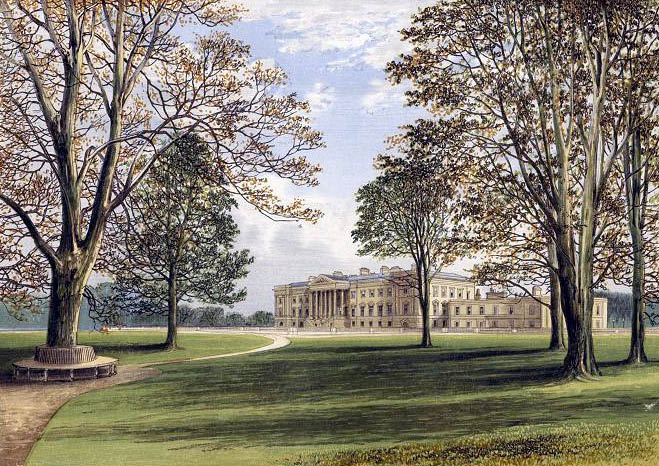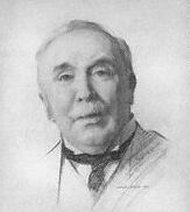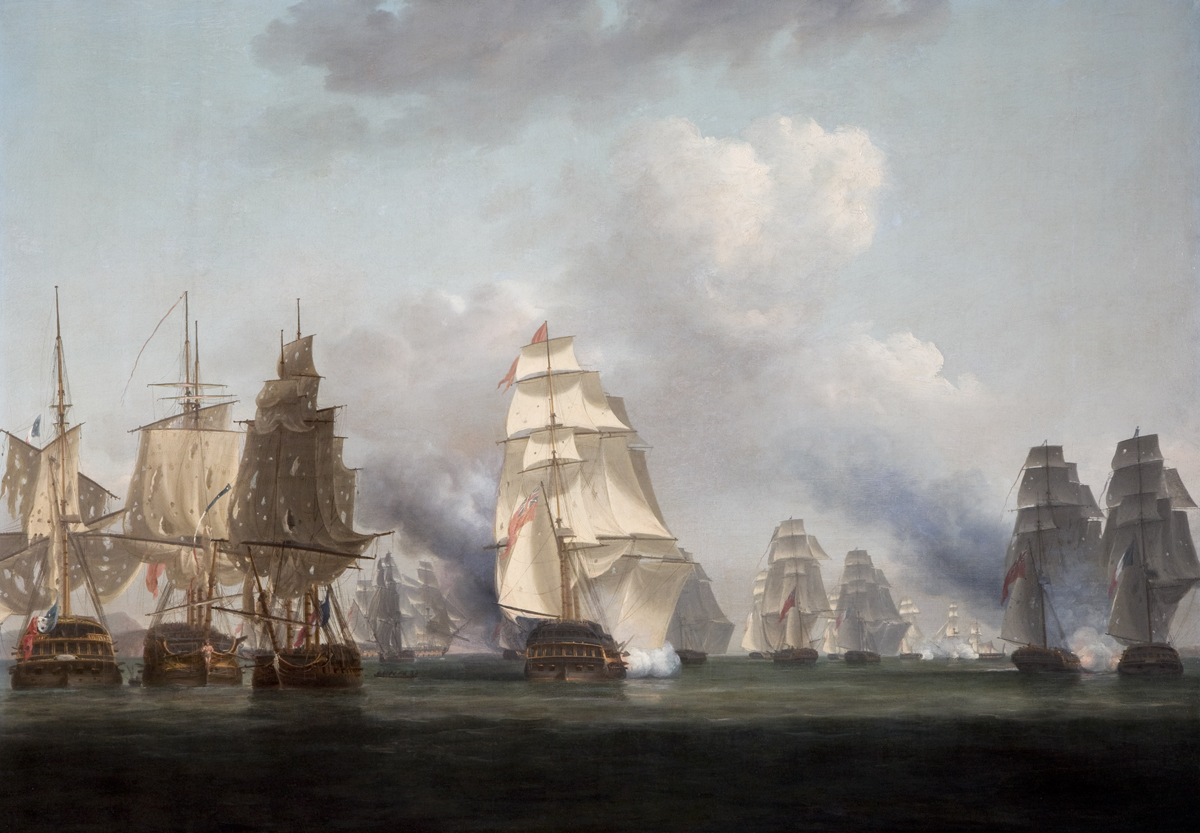|
John Moore (British Soldier)
Lieutenant-General Sir John Moore, (13 November 1761 – 16 January 1809), also known as Moore of Corunna , was a senior British Army officer. He is best known for his military training reforms and for his death at the Battle of Corunna, in which he repulsed a French army under Marshal Soult during the Peninsular War. After the war General Sarrazin wrote a French history of the battle, which nonetheless may have been written in light of subsequent events, stating that "Whatever Bonaparte may assert, Soult was most certainly repulsed at Corunna; and the British gained a defensive victory, though dearly purchased with the loss of their brave general Moore, who was alike distinguished for his private virtues, and his military talents." Early years John Moore was born in Glasgow, the son of John Moore, a doctor and writer, and the older brother of Admiral Sir Graham Moore. He attended Glasgow High School, but at the age of 11 joined his father and Douglas, the young 16-year-ol ... [...More Info...] [...Related Items...] OR: [Wikipedia] [Google] [Baidu] |
Glasgow
Glasgow ( ; sco, Glesca or ; gd, Glaschu ) is the most populous city in Scotland and the fourth-most populous city in the United Kingdom, as well as being the 27th largest city by population in Europe. In 2020, it had an estimated population of 635,640. Straddling the border between historic Lanarkshire and Renfrewshire, the city now forms the Glasgow City Council area, one of the 32 council areas of Scotland, and is governed by Glasgow City Council. It is situated on the River Clyde in the country's West Central Lowlands. Glasgow has the largest economy in Scotland and the third-highest GDP per capita of any city in the UK. Glasgow's major cultural institutions – the Burrell Collection, Kelvingrove Art Gallery and Museum, the Royal Conservatoire of Scotland, the Royal Scottish National Orchestra, Scottish Ballet and Scottish Opera – enjoy international reputations. The city was the European Capital of Culture in 1990 and is notable for its architecture, cult ... [...More Info...] [...Related Items...] OR: [Wikipedia] [Google] [Baidu] |
Peninsular War
The Peninsular War (1807–1814) was the military conflict fought in the Iberian Peninsula by Spain, Portugal, and the United Kingdom against the invading and occupying forces of the First French Empire during the Napoleonic Wars. In Spain, it is considered to overlap with the Spanish War of Independence. The war started when the French and Spanish armies invaded and occupied Portugal in 1807 by transiting through Spain, and it escalated in 1808 after Napoleonic France occupied Spain, which had been its ally. Napoleon Bonaparte forced the abdications of Ferdinand VII and his father Charles IV and then installed his brother Joseph Bonaparte on the Spanish throne and promulgated the Bayonne Constitution. Most Spaniards rejected French rule and fought a bloody war to oust them. The war on the peninsula lasted until the Sixth Coalition defeated Napoleon in 1814, and is regarded as one of the first wars of national liberation. It is also significant for the emergence of larg ... [...More Info...] [...Related Items...] OR: [Wikipedia] [Google] [Baidu] |
Geneva
Geneva ( ; french: Genève ) frp, Genèva ; german: link=no, Genf ; it, Ginevra ; rm, Genevra is the List of cities in Switzerland, second-most populous city in Switzerland (after Zürich) and the most populous city of Romandy, the French-speaking part of Switzerland. Situated in the south west of the country, where the Rhône exits Lake Geneva, it is the capital of the Canton of Geneva, Republic and Canton of Geneva. The city of Geneva () had a population 201,818 in 2019 (Jan. estimate) within its small municipal territory of , but the Canton of Geneva (the city and its closest Swiss suburbs and exurbs) had a population of 499,480 (Jan. 2019 estimate) over , and together with the suburbs and exurbs located in the canton of Vaud and in the French Departments of France, departments of Ain and Haute-Savoie the cross-border Geneva metropolitan area as officially defined by Eurostat, which extends over ,As of 2020, the Eurostat-defined Functional Urban Area of Geneva was made up of 9 ... [...More Info...] [...Related Items...] OR: [Wikipedia] [Google] [Baidu] |
Grand Tour
The Grand Tour was the principally 17th- to early 19th-century custom of a traditional trip through Europe, with Italy as a key destination, undertaken by upper-class young European men of sufficient means and rank (typically accompanied by a tutor or family member) when they had come of age (about 21 years old). The custom—which flourished from about 1660 until the advent of large-scale rail transport in the 1840s and was associated with a standard itinerary—served as an educational rite of passage. Though it was primarily associated with the British nobility and wealthy landed gentry, similar trips were made by wealthy young men of other Protestant Northern European nations, and, from the second half of the 18th century, by some South and North Americans. By the mid-18th century, the Grand Tour had become a regular feature of aristocratic education in Central Europe as well, although it was restricted to the higher nobility. The tradition declined in Europe as enthusiasm fo ... [...More Info...] [...Related Items...] OR: [Wikipedia] [Google] [Baidu] |
Douglas Douglas-Hamilton, 8th Duke Of Hamilton
Douglas Hamilton, 8th Duke of Hamilton, 5th Duke of Brandon and 2nd Baron Hamilton of Hameldon, (24 July 1756 – 2 August 1799) was a Scotland, Scottish peerage of Scotland, peer, nobleman, and politician. Life Hamilton was born at the Holyrood Palace, Palace of Holyroodhouse, the son of the James Hamilton, 6th Duke of Hamilton, 6th Duke of Hamilton and his wife, Elizabeth Hamilton, 1st Baroness Hamilton of Hameldon, Elizabeth Gunning. He attended Eton College, Eton from 1763 to 1767 and on the death of his brother in 1769, he succeeded to the title of Duke of Hamilton. He also inherited his mother's title of Baron Hamilton of Hameldon when she died in 1790. Between 1772 and 1776, he lived in Europe with John Moore (Scottish physician), Dr. John Moore and his son, the future John Moore (British Army officer), Lieutenant-Colonel Sir John Moore, hero of Corunna. On his return, aged 21, he married the beautiful Elizabeth Hamilton, Duchess of Hamilton, Elizabeth Anne Burrell (b. ... [...More Info...] [...Related Items...] OR: [Wikipedia] [Google] [Baidu] |
High School Of Glasgow
The High School of Glasgow is an independent, co-educational day school in Glasgow, Scotland. The original High School of Glasgow was founded as the choir school of Glasgow Cathedral in around 1124, and is the oldest school in Scotland, and the twelfth oldest in the United Kingdom. On its closure as a selective grammar school by Glasgow City Corporation in 1976, it immediately continued as a co-educational independent school as a result of fundraising activity by its Former Pupil Club and via a merge by the Club with Drewsteignton School. The school maintains a relationship with the Cathedral, where it holds an annual service of commemoration and thanksgiving in September. It counts two British Prime Ministers, two Lords President and the founder of the University of Aberdeen among its alumni. It is a selective school, meaning prospective pupils must sit an entrance test to gain admission. In 2009 and 2017, ''The Times'' placed it as the top independent school in Scotland for ... [...More Info...] [...Related Items...] OR: [Wikipedia] [Google] [Baidu] |
Graham Moore (Royal Navy Officer)
Admiral Sir Graham Moore, (1764–1843) was a Royal Navy officer. As a junior officer he took part in the Great Siege of Gibraltar during the American Revolutionary War. As captain of the frigate , he took part in the Battle of Tory Island in October 1798, capturing the two days later, during the French Revolutionary Wars. He went on to be First Naval Lord, then Commander-in-Chief, Mediterranean Fleet, and finally, Commander-in-Chief, Plymouth. He was the younger brother of General Sir John Moore. Naval career Moore was born in Glasgow, Scotland, the son of Jean Simson and John Moore, doctor and author. He entered the Navy in 1777 at the age of 13. He was promoted to lieutenant on 8 March 1782 to serve aboard , taking part in the relief of Gibraltar under Lord Howe, and the subsequent battle of Cape Spartel in October. During the peace he travelled through France, but was recalled to serve aboard , , and then , the flagship of Sir Richard Hughes on the North American Stati ... [...More Info...] [...Related Items...] OR: [Wikipedia] [Google] [Baidu] |
John Moore (Scottish Physician)
John Moore FRSE (1729 – 1802) was a Scottish physician and travel author. He also edited the works of Tobias Smollett. Life He was born on 10 October 1729 in Stirling, the son of Rev Charles Moore of Rowallan (d,1735) and his wife, Marion Anderson. The family moved to Glasgow in his youth and he was educated at Glasgow Grammar School. He was then apprenticed to Dr. John Gordon in Glasgow 1745 to 1747. After taking a medical degree at University of Glasgow, Glasgow, he served as a Surgeon's Mate with the army in Flanders during the Seven Years' War, then proceeded to London to continue his studies, and eventually to Paris, where became surgeon to the household of the British ambassador there. In 1751 he returned to Glasgow to rejoin Dr. John Gordon (also then practising with Dr. Thomas Hamilton). From 1769 to 1778 he accompanied the Duke of Hamilton (who was linked to Thomas) on a Grand Tour of Europe. On his return he took up residence in London. In 1792 he accompanied James ... [...More Info...] [...Related Items...] OR: [Wikipedia] [Google] [Baidu] |
Jean Sarrazin
Jean Sarrazin (15 August 1770 – 11 November 1848) was a French general during the Revolutionary and Napoleonic Wars. Born at Penne, Sarrazin joined the dragoons at sixteen and was rapidly promoted after 1792. He became adjutant-general of the Army of Sambre-et-Meuse in Italy in 1794, and was promoted to the rank of brigadier on 23 August 1798. He was a leader of the French expedition to support the Irish rebels in 1798, and distinguished himself at the Battle of Castlebar. Although intelligent and brave, his career was several times set back by his irascibility and vanity. On 10 June 1810, Sarrazin went over to the British and revealed French weaknesses. Condemned ''in absentia'' to death by a ''conseil de guerre'', he did not return to France until the Bourbon Restoration. He offered his services to Napoléon Bonaparte during the Hundred Days, but was thrown in prison. Pardoned in 1822, he went into exile in London and then Brussels Brussels (french: Bruxelles or ; ... [...More Info...] [...Related Items...] OR: [Wikipedia] [Google] [Baidu] |
Nicolas Jean De Dieu Soult
Marshal General Jean-de-Dieu Soult, 1st Duke of Dalmatia, (; 29 March 1769 – 26 November 1851) was a French general and statesman, named Marshal of the Empire in 1804 and often called Marshal Soult. Soult was one of only six officers in French history to receive the distinction of Marshal General of France. The Duke also served three times as President of the Council of Ministers, or Prime Minister of France. Soult played a key role as a corps commander in many of Napoleon's campaigns, most notably at Austerlitz, where his corps delivered the decisive attack that won the battle. Later, Soult's intrigues in the Peninsular War while occupying Portugal earned him the nickname, "King Nicolas", and while he was Napoleon's military governor of Andalusia, Soult looted 1.5 million francs worth of art. One historian called him "a plunderer in the world class." He was defeated in his last offensives in Spain in the Battle of the Pyrenees (Sorauren) and by Freire's Spaniards at San ... [...More Info...] [...Related Items...] OR: [Wikipedia] [Google] [Baidu] |
Lieutenant-General
Lieutenant general (Lt Gen, LTG and similar) is a three-star military rank (NATO code OF-8) used in many countries. The rank traces its origins to the Middle Ages, where the title of lieutenant general was held by the second-in-command on the battlefield, who was normally subordinate to a captain general. In modern armies, lieutenant general normally ranks immediately below general and above major general; it is equivalent to the navy rank of vice admiral, and in air forces with a separate rank structure, it is equivalent to air marshal. A lieutenant general commands an army corps, made up of typically three army divisions, and consisting of around 60 000 to 70 000 soldiers (U.S.). The seeming incongruity that a lieutenant general outranks a major general (whereas a major outranks a lieutenant) is due to the derivation of major general from sergeant major general, which was a rank subordinate to lieutenant general (as a lieutenant outranks a sergeant major). In contrast, i ... [...More Info...] [...Related Items...] OR: [Wikipedia] [Google] [Baidu] |
Lanark Burghs (UK Parliament Constituency)
Lanark Burghs (also known as Linlithgow Burghs) was a district of burghs constituency of the House of Commons of the Parliament of the United Kingdom (at Westminster) from 1708 to 1832, representing a seat for one Member of Parliament (MP). There was also a later Lanark county constituency, from 1918 to 1983. Creation The British parliamentary constituency was created in 1708 following the Acts of Union, 1707 and replaced the former Parliament of Scotland burgh constituencies of Linlithgow, Lanark, Peebles and Selkirk. Boundaries The constituency covered four burghs: Linlithgow in the county of Linlithgow, Lanark in the county of Lanark, Peebles in the county of Peebles, and Selkirk in the county of Selkirk. History The constituency elected one Member of Parliament (MP) by the first past the post system until the seat was abolished for the 1832 general election. For the 1832 general election, as a result of the Representation of the People (Scotland) Act 1832, Pee ... [...More Info...] [...Related Items...] OR: [Wikipedia] [Google] [Baidu] |






